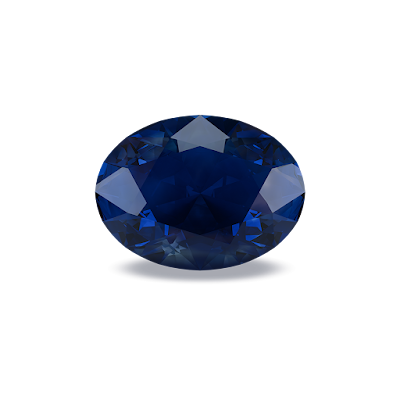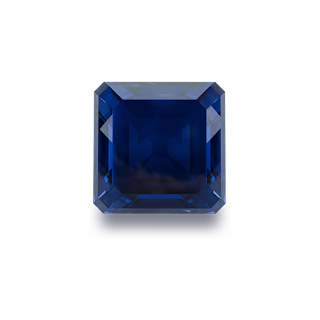When you think of sapphires, you might envision deep blue stones adorning royal crowns or engagement rings. But what if a single sapphire could capture the golden warmth of a sunset and the tranquil hues of the ocean? Enter the bicolor sapphire-a rare gemstone that marries two distinct colors in one mesmerizing canvas. Beyond its visual allure, this gem whispers tales of duality, balance, and harmony. Let’s unravel the secrets of this extraordinary stone, exploring its symbolism, practical uses, and why it’s stealing the spotlight in modern jewelry.
What Is a Bicolor Sapphire?
Bicolor sapphires are a variety of corundum (the mineral family of sapphires and rubies) that display two contrasting colors within a single stone. Unlike traditional sapphires, which are prized for uniform color saturation, bicolor gems showcase natural gradients or distinct color zones. These transitions can be subtle (like soft blue melting into lavender) or striking (think vibrant yellow sharply meeting deep teal).
How Are They Formed?
The magic of bicolor sapphires lies in their formation. Trace elements like iron, titanium, and chromium seep into the corundum crystal during its growth underground. Variations in temperature, pressure, and chemical exposure cause uneven distribution of these elements, resulting in bands or patches of different colors. Major sources include Sri Lanka, Madagascar, and Australia, where miners occasionally unearth these kaleidoscopic treasures.
A Rainbow of Possibilities: Color Combinations
Bicolor sapphires defy monotony. Their charm lies in their unpredictable pairings, each stone telling a unique story through its hues:
- Blue and Yellow: Resembling a sunlit ocean meeting sandy shores, this combo symbolizes joy meeting serenity.
- Pink and Green: A delicate balance of passion (pink) and renewal (green), evoking spring blossoms.
- Purple and Orange: A bold contrast of creativity (purple) and vitality (orange), perfect for free spirits.
The most sought-after stones feature clear color separation or a smooth gradient, with neither hue overpowering the other.
Symbolism: Where Two Worlds Collide
Sapphires have long symbolized wisdom, integrity, and divine favor. Ancient Persians believed the earth rested on a giant sapphire, its reflection coloring the sky. Bicolor sapphires add layers to this lore, celebrating the union of opposites:
Harmony in Duality: Two colors in one stone mirror life’s balancing acts-work and play, logic and intuition, strength and vulnerability. This makes bicolor sapphires a talisman for those navigating complex relationships or personal growth.
Personal Transformation: The blending of colors can signify evolution, like dawn transitioning to day or autumn leaves shifting hues. It’s a reminder that change is beautiful.
Emotional Balance: Blue’s calming energy paired with yellow’s optimism creates a stone that soothes anxiety while sparking joy-a “best of both worlds” essence.
In metaphysical circles, these gems are thought to align the throat and crown chakras, fostering clear communication and spiritual awakening.
A Gem Through the Ages: Historical & Cultural Glimpses
While not as famed as their single-color cousins, bicolor sapphires have quietly made history:
- Victorian Era: Jewelers during the 1800s adored “parti sapphires” (Australian bicolors) for their rustic charm, often setting them in floral-inspired designs.
- Modern Muse: Designer Suzanne Kalan’s “Fireworks” jewelry line features bicolor sapphires, celebrating their raw, gradient beauty in sleek, contemporary settings.
Culturally, dual-colored stones are seen in East Asian art as symbols of yin-yang harmony, representing interconnected forces.
Bicolor Sapphires in Jewelry: Unconventional Elegance
Forget predictable solitaires-bicolor sapphires thrive in designs that highlight their uniqueness:
- Engagement Rings: Couples seeking non-traditional rings gravitate toward peach-and-blue sapphires for a touch of whimsy.
- Pendant Necklaces: A teardrop-cut bicolor stone becomes a conversation piece, dangling gracefully as it catches light.
- Custom Designs: Many jewelers use these gems as centerpieces in nature-inspired motifs (e.g., sunset horizons, ocean waves).
Cutting Styles:
- Oval or Cushion Cuts: Maximize color transitions.
- Freeform Cabochons: Highlight organic, undulating color zones for bohemian flair.
Choosing Your Bicolor Sapphire: A Buyer’s Guide
- Color Balance: Look for distinct, well-defined hues. Avoid muddy blends where colors clash.
- Clarity: Minor inclusions are common, but ensure they don’t distract from the color play.
- Cut: A skilled lapidary enhances the stone’s natural drama. Ask for precision cuts that follow color zones.
- Ethics: Opt for vendors certified by the Gemological Institute of America (GIA) or those adhering to fair-trade mining practices.
Pro Tip: View stones under different lighting. A sapphire might flash green indoors but reveal blue undertones in sunlight!
Caring for Your Gem: Keep It Dazzling
- Cleaning: Use warm water, mild soap, and a soft brush. Avoid ultrasonic cleaners if the stone has fractures.
- Storage: Keep it separate from harder gems (like diamonds) to prevent scratches.
- Wear Mindfully: Though durable (9 on the Mohs scale), remove your ring during heavy lifting or gardening.
Why Bicolor Sapphires Are Today’s Hidden Gem
In a world craving authenticity, bicolor sapphires resonate deeply. They’re not mass-produced-each stone is a one-of-a-kind masterpiece, much like the individuals who wear them. Whether you’re drawn to their symbolic depth or their artsy appeal, these gems invite you to embrace life’s beautiful contradictions.
Final Thoughts: The Allure of Twofold Beauty
Bicolor sapphires are more than just pretty stones; they’re metaphors for the human experience. In their dual hues, we see our own complexities reflected-the messy, magnificent blend of light and shadow that makes us whole. As you explore these gems, remember: the most captivating beauty often lies in the balance.















0 Comments